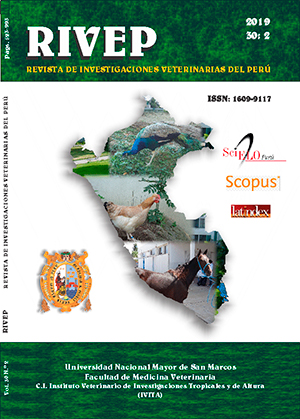Performance of Tithonia diversifolia under tropical humid forest conditions
DOI:
https://doi.org/10.15381/rivep.v30i2.15066Keywords:
food, forage banks, nutrition, livestock production, livestock agroforestry systems, soilsAbstract
The performance of forage banks of Tithonia diversifolia established in degraded soils, with prolonged application of agrochemicals, under humid tropical forest conditions was determined. The forage bank was established on a farm in Yopal, Casanare (Colombia). The evaluation was carried out during a year to determine the effect on the chemical characteristics and the soil macrofauna, production of green forage and dry matter, relationship between the biomass of leaf-stem and nutritional quality of the whole plant and fractions (leaf-stem). There were increases in nutrients and soil mesofauna. Likewise, differences were observed in forage production and leaf-stem ratio. The forage presented nutritional quality between acceptable and good, with the leaves being the best quality fraction. It is concluded that Tithonia diversifolia has potential for the recovery of degraded soils and adaptation to different climatic conditions, and may contribute to the production of good quality feed in strategic supplementation programs for critical periods in livestock production systems.
Downloads
Downloads
Published
Issue
Section
License
Copyright (c) 2019 Alexander Navas Panadero

This work is licensed under a Creative Commons Attribution-NonCommercial-ShareAlike 4.0 International License.
AUTHORS RETAIN THEIR RIGHTS:
a. Authors retain their trade mark rights and patent, and also on any process or procedure described in the article.
b. Authors retain their right to share, copy, distribute, perform and publicly communicate their article (eg, to place their article in an institutional repository or publish it in a book), with an acknowledgment of its initial publication in the Revista de Investigaciones Veterinarias del Perú (RIVEP).
c. Authors retain theirs right to make a subsequent publication of their work, to use the article or any part thereof (eg a compilation of his papers, lecture notes, thesis, or a book), always indicating the source of publication (the originator of the work, journal, volume, number and date).



